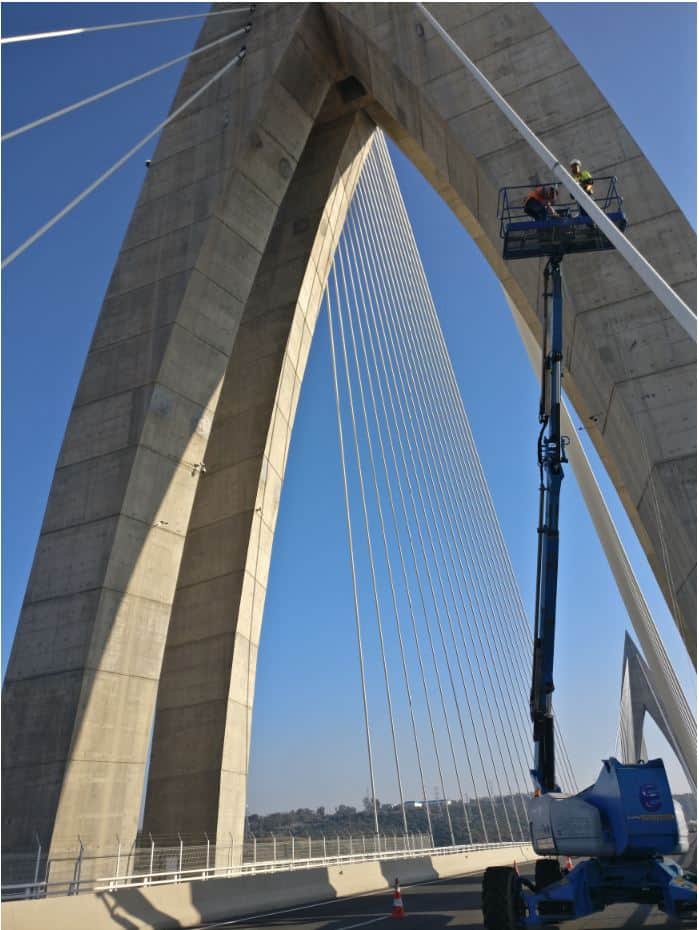Using vibration to measure the tension in the cable stays of the MOHAMMED VI bridge in Morocco
At 950 metres in length, the Mohammed VI bridge remains the largest cable-stayed bridge on the continent of Africa. For this type of bridge, cable-stay tension must be adjusted throughout the construction phase to balance the stresses in the bridge deck; in this case, the contractors used hydraulic jacks. Following completion, an additional series of tension measurements were required. Having commissioned the structure, the Chinese contractor Cover-Mbec appointed Sixense to conduct a campaign to measure the tension in each cable-stay using vibration techniques.
Traditionally, hydraulic jacks would be used to take these measurements which entails expensive resources and immobilizes significant sections of the structure for extended periods. The alternate vibration method utilized by Sixense measures the vibration frequency of cable-stays, which provides a direct relationship to their static tension. In practice, accelerometers are attached to the cable-stays and oscillated for a short period.
For this project, the only resources required to perform the vibration measurement were a single work cradle and vibration analysis kit. As a result, only one lane of traffic needed to be closed for the work to be carried out successfully. The tension in all 160 of the bridge’s cable-stays was measured this way, and the report delivered on time.
This is our largest cable-stay tension measurement campaign to date, and the local team was supported by just-in-time data analysis by colleagues in France. This allowed us to optimise the measurement report delivery lead time and meet the deadlines set by our customer”
Quentin Common, Project Manager at Sixense



